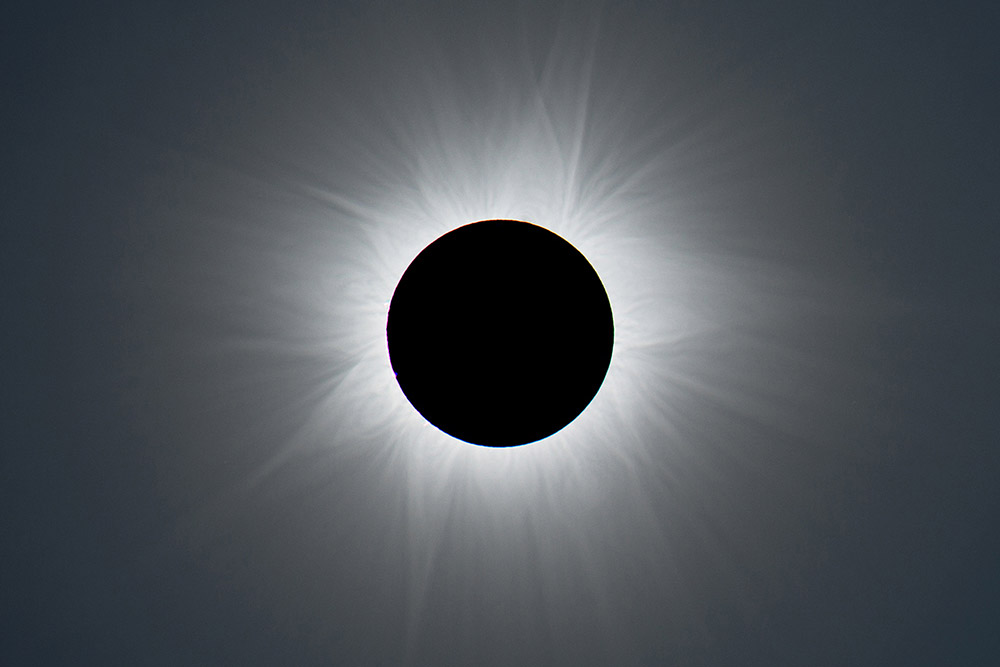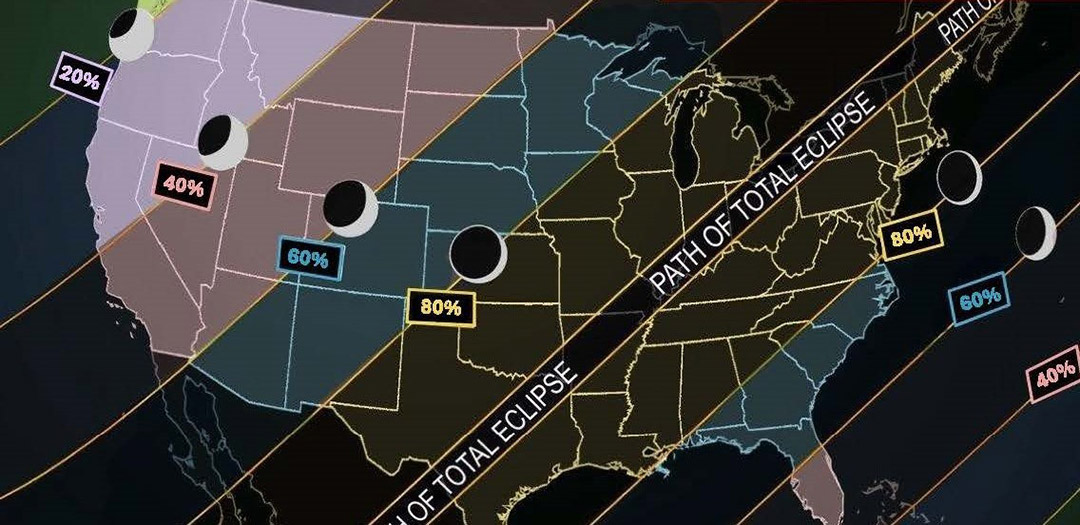RIT study reveals public’s engagement with 2024 solar eclipse across America
Saunders College researcher highlights trends, implications for preparedness ahead of celestial event
Robert Slobins
Muhammet Kesgin, a faculty researcher from Saunders College of Business at RIT, has co-authored a study capturing the public’s pre-event engagement with the 2024 solar eclipse happening across the U.S. next week.
A faculty researcher from Saunders College of Business at RIT has conducted a study capturing the public’s pre-event engagement with the 2024 solar eclipse happening across the U.S. next week.
According to Muhammet Kesgin, associate professor in the International Hospitality and Service Innovation Department, and Kate Russo, an eclipse-chasing psychologist based in Australia who has witnessed 13 total solar eclipses throughout the world, their study is the first to explore the level of awareness of the eclipse across the U.S.—both inside and outside of the path of totality.
Each survey, undertaken at two time points—one 30 days prior, the other 15 days before the eclipse—collected data from more than 500 participants, split evenly between respondents identifying as male or female. Among the key findings:
- Results demonstrated that awareness and knowledge has grown significantly as the total solar eclipse gets closer in locations where the sun will be covered 80 to 99 percent, and 100 percent.
- Engagement and awareness varies according to age and location in terms of proximity to the path of totality.
- Awareness levels are almost identical between survey participants who identified as male or female, while there was a general trend toward higher awareness the older the age group.
On April 8, the sun, moon, and Earth will enter the precise alignment of a total solar eclipse. The moon will block the sun, casting a shadow across a strip of North America from the Pacific Ocean west of Mexico, through 15 U.S. States, to the Atlantic off Canada.
Daniel Bonds
The path of the total eclipse and the percentage of the sun that will be covered by locations on April 8, 2024.
This strip, roughly 4,000 miles and 115 miles wide, is called the path of totality. For a short while, everyone and everything in this path will experience midday darkness. In the Finger Lakes region, the sky will darken at approximately 3:20 p.m.
“Communities like Rochester within the path have been preparing their regions for the impact of the event over years, including resource planning, emergency management, traffic flow and coordination, and security implications,” Kesgin observed. “We wanted to determine the level of awareness and engagement in the general population by surveying people across the U.S. to help inform those planning.”
"Many Americans have been planning for this total eclipse for some time, reflected in the surge of accommodation bookings across the path of totality,” Russo added. “We also know that many people will try to get into the path of totality at the last minute on April 8—how many remains unknown. We wanted to get a sense of the level of awareness and intention to travel into the path from people living across the U.S., so we can reduce some of the unknowns."
Next week’s solar eclipse occurs seven years after the 2017 total solar eclipse, which was the first time in 39 years that the path of totality made landfall in the U.S., according to the study’s authors. However, unlike the 2017 solar eclipse, which crossed over mostly rural and remote areas, “the 2024 total solar eclipse is a much more significant event,” they said.
“The path is wider, the duration of totality is longer, and greater numbers live within and near to the path of totality,” Kesgin said. “Awareness is much greater compared to the 2017 total solar eclipse.”
Indeed, the 2024 path crosses over and near to major U.S. cities and high population-density areas, with an estimated 12 million expected to travel into the path of totality on April 8, according to Russo. “This event is expected to be one of the most significant mass-transit events in U.S. history,” she said. “Significant planning has been coordinated at national, state, and local levels to ensure the impact of this event is prepared for.”
The survey at 30 days out of those living within the path of totality indicated 4 percent of respondents were expecting to travel to a different location within the path. At 15 days out, however, the survey showed an increase to 12 percent of those indicating their likelihood to travel.
“This has significant implications for traffic management, especially in high population areas,” Russo said.
Kesgin added that he also plans to study people’s experiences both during and after the total solar eclipse, with the intention to publish the findings in a peer-reviewed academic journal.
“The legacy of the event is even more important to me,” he said. “People are asking about the impact, but I care even more about the potential positive consequences in the long term. Will people say Rochester was one of the more prepared cities?”
Kesgin’s research primarily examines destination marketing and tourist behavior, with a special emphasis on attractions, customer experience design, and customer engagement. He currently serves on the editorial board of Journal of Hospitality and Tourism Insights, and his research has been published in a wide range of leading international publications, including International Journal of Contemporary Hospitality Management, Information & Management, Current Issues in Tourism, the Service Industries Journal, Journal of Destination Marketing and Management, and the Journal of Revenue and Pricing Management.
Russo is the founder of Being in the Shadow, an Australian-based consultancy providing global expertise and guidance related to the total solar eclipse, and the author of the "White Paper on Community Solar Eclipse Planning". The second edition, released in 2022, incorporates lessons learned from the “Great American Eclipse” in 2017.
Based on their findings, both researchers were somewhat surprised to learn that there was an increased desire to travel on April 8 within the path of totality.
“It may be due to a significant section of the path having a high chance of clouds based on historical weather patterns,” observed Kesgin, also noting high-profile viewing events and eclipse viewers gathering with family and friends within the path of totality. “Those who are familiar with the weather may understand that relocation may increase the chances of avoiding challenging weather.”
“Hopefully, the weather won’t disappoint us,” he added.









